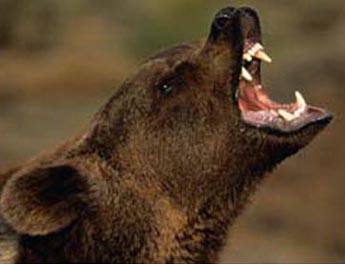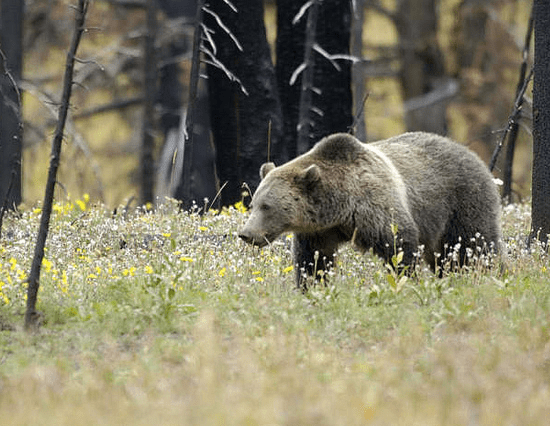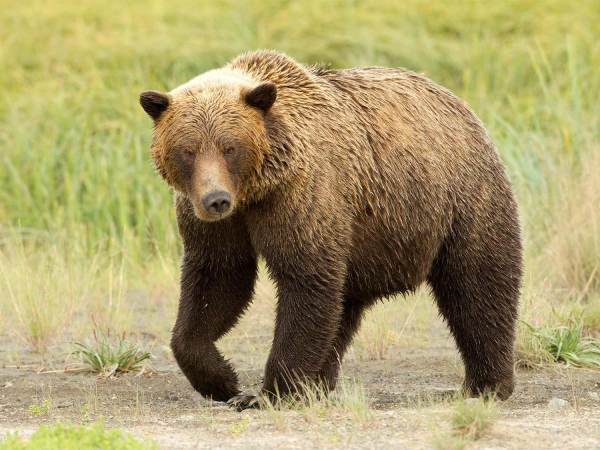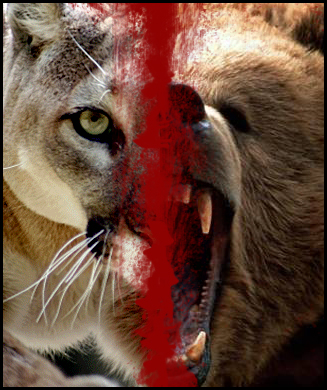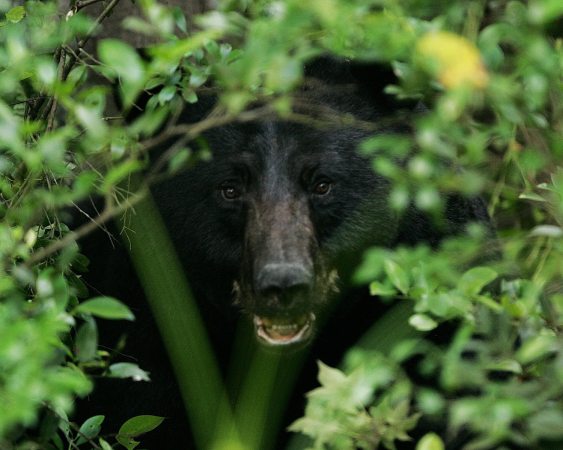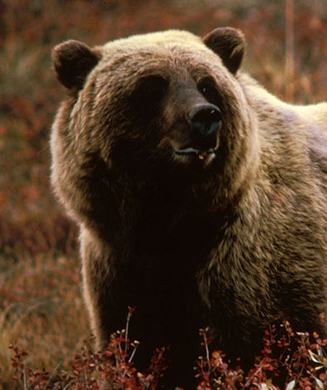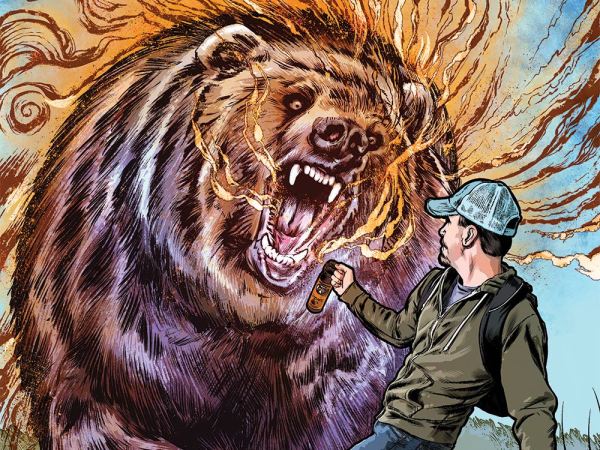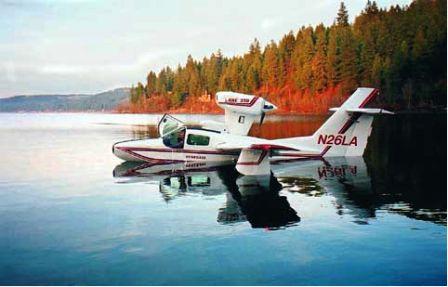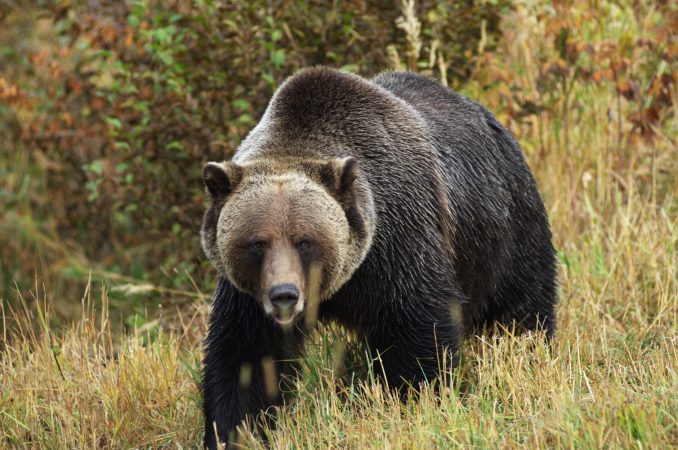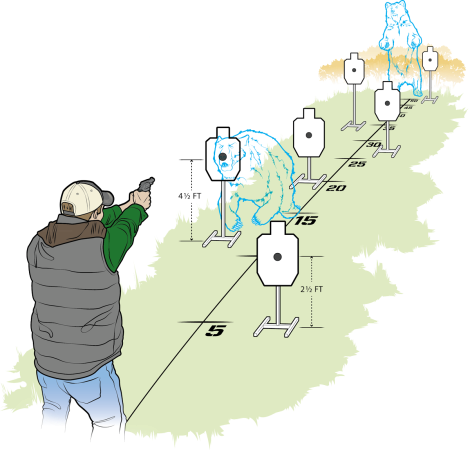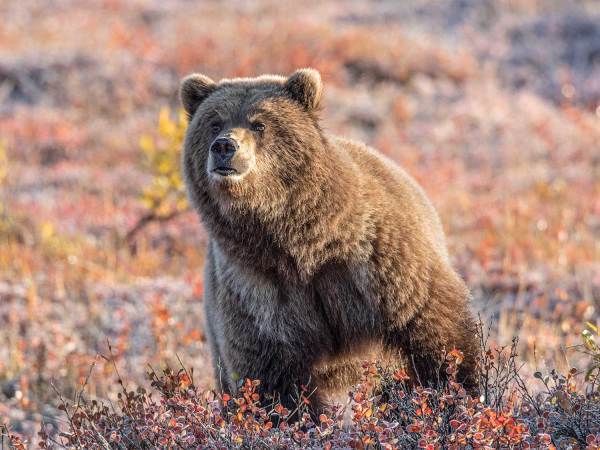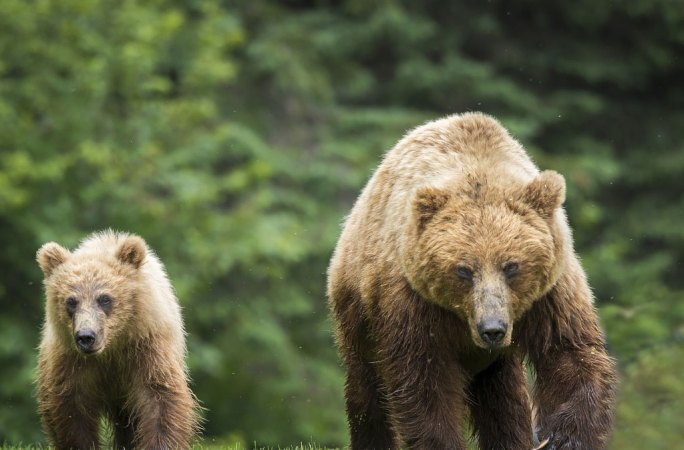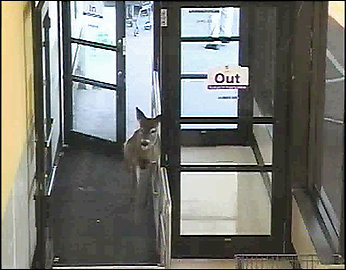“That bear is stalking us,” said my friend Larry Suiter as we glassed for Sitka blacktail deer on Alaska’s Sitkalidak Island.
Larry was intently scanning the shrub-laced valley we had walked earlier that morning. An 8-foot Kodiak brown bear was walking the same route we had taken. The bear had its nose to our trail like a beagle on a rabbit track, though we had taken no deer and our hip boots, clothing and packs were clean of deer scent and food. When I watched it pass within 30 yards of two blacktail does without stopping, I knew we had a problem.
“Let’s get to higher ground,” said Larry. We huffed to the next level of alpine tundra, where we had a clear view. I suggested a higher knoll, which would give us a better field of fire and put a massive ravine between us and the bear. Larry looked down just as we reached the top.
The bear, on a dead run, cleared the ridge. It would have bowled us over had we not moved to the higher position. It disappeared into the thicketed ravine, but soon reemerged in the open, on our side, 50 yards from us. We were already in defensive mode. Larry was sitting with his .338 shouldered. I took a step toward the bear, threatening it with all sorts of consequences if it came one step closer.
The bear held its head low, swaying it from side to side, trying to get our scent. It moved forward a few feet and hesitated before slowly backing up. It crouched like a cat, ready to pounce. Seeing we were not deterred, the bear eased sideways into the ravine and disappeared. That put us on alert.
“He’s trying to sneak around and get above us,” Larry said.
Perched on a rocky point overlooking the ravine, I watched the bear weave through the thickets, trying to circle around us. I scurried to an outcrop above it. It stopped, sat down and looked directly at me. The standoff lasted 20 minutes. I waved Larry over to me and we scurried up an opposite hillside out of sight of the bear. We never saw it again.
We later learned that a group of bowhunters had been in the area a week before. The bear might have associated humans with deer remains. Whatever his motivation, he presented a potentially dangerous scenario that fortunately we avoided.
When a bear is defensive, predatory or habituated to human activity, it might not run off. In 2003, an Alaska brown bear famously attacked and killed Timothy Treadwell and Amie Huguenard at their camp in Katmai National Park. Treadwell had lived among the bears for 13 summers. Nevertheless, a bear was found feeding on the couple’s remains, a gruesome reminder of the unpredictability of these creatures in the wild. “Horror stories like this make people reach for their guns and fire without thinking,” says Tom Smith, a research wildlife ecologist who specializes in interactions between brown bears and humans. “Sterling Miller, an Alaska bear researcher, published a paper that showed there was a spike in defense- of-life-and-property killings following each well-publicized bear attack. Such incidents put people on edge and they respond to bears by shooting first and asking questions later.”
An inquisitive or even an attacking bear can be effectively deterred without injury to the bear. Only as a last resort, when contact is imminent or your survival is threatened, should you consider using lethal force. Ultimately, it’s your obligation to properly interpret each bear’s behavior and react in a responsible manner.
[pagebreak] Weapons of Deterrence
Confronting a bear with nothing but one’s own hands can be terrifying. But for Steve Ranney, it’s simply another day in the woods.
On one occasion, Ranney was hauling equipment from a goat camp high in Alaska’s coastal mountains and not carrying his firearm. Right at treeline, a pair of young brown bears were working down the gully above him, playing and running in his direction. Cornered, Rney climbed a spruce tree.
The bears were perhaps 2 or 3 years old, large enough to hurt him if they became irritated or decided to include him in their romp. One of the bears soon tired of playing with its sibling and took a nap at the base of the tree Ranney had climbed. Ranney waited an hour for the bear to move. He was cold, his legs were tired and he still had gear to haul. Rather than risk climbing down, he tossed spruce cones at the bear’s head and shoulders. The bear woke up and ambled off. Ranney was lucky, but he was smart not to flee when he first came upon the bears.
“Encountering a bear without a means of deterring it horrifies people and causes them to run, which is a mistake,” Smith says.
Always carry at least two deterrents in bear country. One should be bear pepper spray, the other a flare pistol, air horn or firearm. Carry one deterrent in your hand; the other should be available immediately, like a handgun in a holster or a shotgun slung over your shoulder.
Bear pepper spray might not be as macho as a firearm, but it provides the confidence to stand your ground and has a proven track record in Alaska. Pepper spray is effective because the sudden, loud hissing sound of the spray and the sight of the billowing cloud of red-orange mist frighten bears.
Smith maintains a database of more than 500 bear-human conflicts in Alaska. Bear pepper spray was used in 65 cases and deterred 61 curious or aggressive bears, for a 94 percent success rate. Of 258 incidents in which firearms were carried or used for bear defense, they were effective in 175 of them, for a 65 percent success rate.
While the .458, .375 and similar big-bore firearms are recommended to slow or stop an attacking bear, a U.S. Forest Service study shows that people have a problem handling the severe recoil of these larger calibers. Smith’s records demonstrate that victims carrying large-caliber firearms often have no time to get off a shot at an attacking bear.
Smith suggests a shotgun and rifled slugs when lethal force is required. “You want stopping power and accuracy. Although buckshot gives you a wider pattern, it divides that energy too much.” Also, unlike some specialized rifle ammunition, shotgun slugs are easily replaceable if you run out of them or your luggage is lost.
“Don’t mix rounds when walking afield,” says Smith. “Always chamber slugs. Only in camp, when you might need to deter a curious bear walking an outside perimeter, should you be loaded with shot. Load one shotshell directly into the chamber. If you suddenly need to use slugs, your remaining shots are lethal loads.”
However, a firearm is no guarantee that you’ll escape an attacking bear unscathed. “Many people carry firearms of insufficient caliber, while others are ambushed so quickly they have no time to fire an accurate shot,” says Smith. “All too often, when attacked suddenly, even the most accurate and experienced shooters miss their mark. While the same elements of fright apply to people carrying pepper spray, the spray’s widespread multiple effect can’t be overlooked.”
Stand Your Ground
Alaska fishing guides often joke that sneakers are the best bear protection- “I don’t have to outrun the bear, just my clients.” But in reality, you’re better off leaving the running shoes at home.
“When eye to eye with a charging Alaska brown bear, most people’s first instinct is to run,” Smith says. “But running usually entices a bear to pursue.”
Stand your ground. Show strength, but don’t challenge the bear unless you absolutely must. Smith’s statistics show that of the 42 times a person chose to run when confronted by an aggressive bear, only 5 percent of the time did the person manage to distance himself from the bear. Only twice did the bear leave without pursuit. In 83 percent of the cases the bear chased the fleeing person, and in some cases, attacked and mauled him.
Running tells a bear that you are weak and would be easily overtaken. “Backing up says, ‘I’m passive and subordinate to you’ and bears understand and exploit such language,” Smith says. “Standing your ground is your first line of defense. It tells the bear, ‘I might be small, and I might suffer in the event of an attack, but you, too, will suffer.'”
[pagebreak] Hazing Perimeter
A hazing perimeter is an imaginary boundary. Choose a tree or other landmark to denote the border of your circle of safety. Once a bear crosses the predetermined line, begin your hazing in escalating order. First, make your presence known quietly. More times than not, this will push the bear off. Next, make noise. And last, fire your pepper spray or a round from a firearm. Sometimes the bear will cross the hazing perimeter slowly. If it charges, you’ll have only a split second to respond.
Each person has his own tolerance level with approaching bears.
“There’s no one-size-fits-all approach,” Smith says. “Individual comfort zones are indicative of a person’s prior experience in bear country, and this distance varies widely.” My zone to begin hazing with pepper spray is 10 yards, while for others, 25 yards may be the limit.
It can be intimidating to see a large bear coming at you. When this happens to me, I repeat the following to myself: “I am invincible. I am greater than the bear. I can deter the bear and, if absolutely necessary, defeat the bear. I have the weapons that will turn it and, as a last resort, kill it if it tries to kill me. I will turn the bear or kill it if it touches me.”
Push Comes to Shove
There is no glory in shooting a defensive or surprised bear. The bear is responding to protect food or its young. Yet bears do attack. When contact is imminent, defend yourself.
When a bear is within your hazing perimeter, other methods of deterrent have failed and contact is imminent, focus intently on that first shot. Aim for the bear’s center of mass and fire.
Then again, you may not have time to shoot. Bears can reach speeds of 35 miles per hour, and an aggressive bear can knock you over before you have a chance to shoulder a firearm. If this happens, roll onto your stomach and play dead. If the bear continues to attack, if the attack is prolonged or if the bear begins to pull out chunks of your flesh, make every effort to maim, deter or kill the bear, as it is predatory.
If you are able to get off a shot before impact, stay focused and keep shooting. A bear can recover quickly from a direct hit and glancing shots are dangerous. Follow-up shots also keep the bear’s nervous system “off line” for a few moments. It’s important to break down the bear so it can’t continue its attack. Ideally, a slug should breag person, and in some cases, attacked and mauled him.
Running tells a bear that you are weak and would be easily overtaken. “Backing up says, ‘I’m passive and subordinate to you’ and bears understand and exploit such language,” Smith says. “Standing your ground is your first line of defense. It tells the bear, ‘I might be small, and I might suffer in the event of an attack, but you, too, will suffer.'”
[pagebreak] Hazing Perimeter
A hazing perimeter is an imaginary boundary. Choose a tree or other landmark to denote the border of your circle of safety. Once a bear crosses the predetermined line, begin your hazing in escalating order. First, make your presence known quietly. More times than not, this will push the bear off. Next, make noise. And last, fire your pepper spray or a round from a firearm. Sometimes the bear will cross the hazing perimeter slowly. If it charges, you’ll have only a split second to respond.
Each person has his own tolerance level with approaching bears.
“There’s no one-size-fits-all approach,” Smith says. “Individual comfort zones are indicative of a person’s prior experience in bear country, and this distance varies widely.” My zone to begin hazing with pepper spray is 10 yards, while for others, 25 yards may be the limit.
It can be intimidating to see a large bear coming at you. When this happens to me, I repeat the following to myself: “I am invincible. I am greater than the bear. I can deter the bear and, if absolutely necessary, defeat the bear. I have the weapons that will turn it and, as a last resort, kill it if it tries to kill me. I will turn the bear or kill it if it touches me.”
Push Comes to Shove
There is no glory in shooting a defensive or surprised bear. The bear is responding to protect food or its young. Yet bears do attack. When contact is imminent, defend yourself.
When a bear is within your hazing perimeter, other methods of deterrent have failed and contact is imminent, focus intently on that first shot. Aim for the bear’s center of mass and fire.
Then again, you may not have time to shoot. Bears can reach speeds of 35 miles per hour, and an aggressive bear can knock you over before you have a chance to shoulder a firearm. If this happens, roll onto your stomach and play dead. If the bear continues to attack, if the attack is prolonged or if the bear begins to pull out chunks of your flesh, make every effort to maim, deter or kill the bear, as it is predatory.
If you are able to get off a shot before impact, stay focused and keep shooting. A bear can recover quickly from a direct hit and glancing shots are dangerous. Follow-up shots also keep the bear’s nervous system “off line” for a few moments. It’s important to break down the bear so it can’t continue its attack. Ideally, a slug should brea
